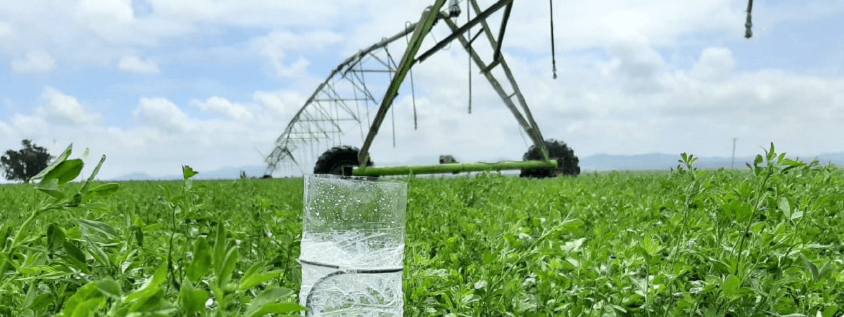Irrigation scheduling is the most common focus for improving water use efficiency on farms, and rightly so. Scheduling helps farmers to irrigate the correct quantity of water at the correct time. However, there are additional practices that a farmer can employ to improve water use efficiency on farms. One way is to check the efficiency of the irrigation system.
Irrigation systems only work efficiently when they are properly maintained and managed. For example, checking for leaks and clogged sprinklers http://traceandsave.com/how-can-you-ensure-water-is-not-being-wasted/. In this blog I will focus on how one can measure the efficiency of an irrigation system in terms of uniformity and distribution of water, and how it can be improved.
What is a catch-can test and why is it important?
A catch-can test is a simple method used to check the efficiency of an irrigation system. This test is important because compromised application uniformity in pastures may result in some areas being over-irrigated and other areas being under-irrigated. Such lack of uniformity will have a negative impact on pasture yield.
How the catch can test is done.
As in the picture above, the first step is to place buckets or containers of equal size across the field where the pivot will pass, or where water will be applied. This is done before the system is turned on. Make sure that the cans are placed at equal intervals across the entire area to be irrigated. They can be 5 m to 10 m apart, depending on the size of the field. Switch the system on and allow it to pass over the cans (in the case of a pivot) or allow the intended irrigation amount to be applied. Once the irrigation event is completed, and no more water is entering the cans (remember to take into account any wind-drift), measure how much water each container received from the irrigation. You will then be able to examine how efficient your irrigation system is by seeing whether the cans have caught the same amount of water or not. You will also be able to assess whether the intended amount to be irrigated ended up reaching the ground.
How to ensure proper irrigation efficiency.
Below is a list of some of the important things you can do to make sure that you are efficient in your irrigation:
- Service and maintain your irrigation system.
- Check and fix any leaks on the system or clogged and worn-out sprinkler heads.
- Try to drop down your sprinklers as this helps with less wind drift during irrigation.
- Make sure your flow meters are working properly as this will help you accurately set the correct amount of water to be irrigated.
- Check for favorable weather conditions that will not interfere with your irrigation, for example irrigating on less windy days or cooler days.
- Have a better understanding of how pressure differences in the system affects your irrigation e.g. Understand that there is greater water pressure nearest the pump station and that pressure reduces as you move further away.
Conclusion.
Sustainable use of our scarce resources such as water should always be prioritized and as a farmer it is your responsibility to obtain maximum efficiency in water usage. Making sure that irrigation systems are working properly by regularly servicing and maintaining them is one of the important ways to ensure efficiency. Also knowing how much is irrigated per time is important as it helps one to be able to know how long to run an irrigation system in order to achieve optimal quantities.
Further reading
- https://www.usga.org/course-care/regional-updates/southeast-region/five-techniques-to-improve-irrigation-efficiency.html.
- http://golfirrigationconsultants.com/catch-can-test.
- http://traceandsave.com/finding-the-water-sweet-spot/.
- Measuring for irrigation efficiency - 2022-09-22
- Why does feed nutrition for dairy cows matter? - 2021-09-20
- Facing a drier future - 2021-05-12


